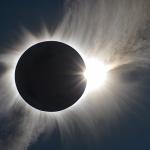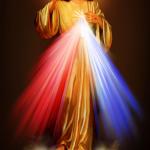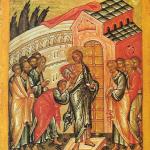
John D. Cunningham, S.J., a particle physicist at Loyola University Chicago, writes in the current volume of Integritas about the rocky history of scientific study in Catholic higher education. He describes an important paradox. While many of the earliest contributors to the physical sciences were Catholics or taught in Catholic (often Jesuit) institutions—Copernicus, Galileo, Volta, Ohm, Ampère, and others—still, there were fellow Catholics who saw their work as threatening to existing theology and cosmology.
Cunningham rightly describes the Galileo affair not as a “science vs. religion” dogfight, an image often shoehorned into facile contemporary debates, but rather as an example of the complex intellectual life unfolding among different members of the same Church. There were some who wanted to hold to Aristotle’s static view of the universe, which seemed to accord with the scholastic image of God turning the spheres of heaven (with Dante, among others). Others were persuaded by the new empirical method, and willing to adapt their theological methods accordingly.
The end result of this intraecclesial conflict was stagnation in the institutional commitment to advance the sciences. Cunningham writes:
A faithful Catholic until the end of his life, Galileo never found his “philosophy” in any way contrary to his religious belief. Unfortunately the rift between the nascent scientific method and philosophy-theology was formed, a rift that many perceive as quite deep nearly five centuries later.
The rift of the sixteenth century was fundamentally a theological one: was Aristotle’s cosmology, which accorded so well with the naïve cosmology of the Biblical authors, sufficient to address the new findings of the sciences? Or did the sciences constitute an epistemic challenge to that cosmology, thereby requiring revision not only of the cosmology but also the naïve Biblical view of the world?
In spite of this rift, there continued to be Catholic luminaries in the history of science and mathematics. Jesuit Roger Boscovich (1711-1787), who anticipated the development of particle physics, developed the first coherent description of atomic theory. (He was the one who persuaded Pope Benedict XIV to remove Copernicus from the Index of Forbidden Books.) Georges Lemaître (1894 – 1966), a Belgian Catholic priest, is now labeled the “Father of the Big Bang” by many. Of him, Cunningham writes:
In a fascinating twist of scientific history, Lemaître had a series of debates with Einstein in regard to the static nature of the universe. Using mathematical analysis and Hubble’s experiment results, Lemaître argued vehemently in support of an expanding universe. Holding a position similar to those in the Middle Ages who espoused the perfection of a static universe, Einstein “fixed” this apparent anomaly by adding a “cosmological constant,” Λ, into his equations to take into account the expanding universe.
In short, it was a Catholic priest who persuaded Einstein that his view of the universe was too static!
Fast forward to the twentieth century. Scientists discovered more about the cosmos as well as the “microcosmos,” the structure of the atom. Catholic institutions did not keep up, and Cunningham points to the paradox.
How this reverse from the great scientific achievements of the seventeenth and eighteenth centuries in Catholic academic circles to its near demise by the mid-twentieth century is important to explore.
The issue, according to Cunningham, was the rapid social and cultural changes wrought during the modern period.
While their secular counterparts were transforming radically in the nineteenth through mid-twentieth centuries, having opted to study the “Book of Nature,” Catholic colleges stagnated on many levels while embracing the “Book of Aristotle.” Even in the fields of philosophy and theology, Catholic academic circles were far behind their Protestant counterparts during this period. It should be noted as well that the intellectual climate in the Catholic Church during this period was equally stagnant, if not hostile, toward new methods and topics in scholarship. The Oath against Modernism (1910) promulgated by Pope Pius X typifies the intellectual climate of this period.
Leaders in Catholic higher education were at a disadvantage, made more significant in large part because of gains in the sciences during the same period. By 1934, when the American Council on Education issued a list of approved doctoral programs which included none of the Jesuit universities, Jesuit superiors in Rome realized the scope of the problem. Cunningham again:
By emphasizing the importance of Catholic culture and values over the innovative changes seen in the secular world, Catholic institutions found themselves left behind by the explosion of knowledge in the physical sciences during this era.
But it was too late; no Catholic universities had the resources to compete with the science programs of the large land-grant institutions. Catholic higher education, in effect, lost the ability to participate in the most cutting-edge scientific research.
Yet there is a silver lining. Cunningham observes that the explosion of scientific knowledge in the twentieth century contributed to the horrors of the atomic bomb and the myriad ethical questions about such things as medical technologies and human cloning. It has become abundantly clear that scientific knowledge raises larger human questions, questions which Catholic universities are well positioned to address.
[T]he study of science at Catholic colleges and universities is vastly enriched by the parallel study of topics in philosophy, where the framework of scientific inquiry can be explored, or in ethics, where the motivations and consequences of scientific research can be discussed and judged, or in theology, where the spiritual dimension of science can be appreciated or in various other courses, such as history, where the “wide-angle” view of human activity can be examined and pondered. The list of how liberal arts courses can enrich the life of a student studying science can be quite extensive and powerful.
In other words, while Catholic institutions are not likely to outpace well-funded research institutions in the generation of new scientific knowledge, they can do two things. They can pool their resources in ways that redound to the shared benefit of all involved in cooperative projects (and more and more science looks like that anyway); and they can bring the sciences into dialogue with the liberal arts for an expansive new understanding of the human being, the nature of life, the nature of the cosmos, the nature of consciousness, and so on.
Catholic intellectualism gave rise to modern science and can still provide a home for the newest research. In the words of Gaudium et Spes, the Vatican II Pastoral Constitution on the Church in the Modern World:
[W]hoever labors to penetrate the secrets of reality with a humble and steady mind, even though he is unaware of the fact, is nevertheless being led by the hand of God, who holds all things in existence, and gives them their identity.














